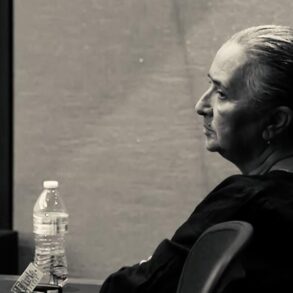Fishman, Ph.D., is co-founder of the Racial Justice Coalition of San Diego and was a member of the County of San Diego Alternatives to Incarceration advisory board. He lives in El Cajon.
The final alternatives to incarceration report from the San Diego Association of Governments starts with this very admirable and powerful statement: “Mass incarceration disproportionately impacts the poor, homeless, mentally ill, and people of color and does not make us safer.”
This profound and simple acknowledgment should guide all of us — and should be meaningful. But after about 18 months of service on the San Diego County Board of Supervisors’ 11-member Alternatives to Incarceration advisory board, I was definitely disabused of any notion that this opening passage meant anything more than words on a page. Now, it seems like just another political stunt.
The fundamental challenge for this project, as with any meaningful work on criminal justice reform, is the full acknowledgment that the status quo does not work. You can’t make a statement about mass incarceration and its disproportionate impact on marginalized communities being the basis of your work and your goals unless you also fully appreciate that this did not happen by accident and can’t change by simply writing these words on a page or announcing them from county supervisorial chambers during a meeting.
When one actually scratches past the glossy surface words, one finds there really is nothing there. There is no meaningful policy proposal or legislation to change the practices that produced the disproportionate numbers in the first place.
In fact, the numerous proposals presented by me and many other members of the advisory board never found their way onto the supervisors’ official docket in May.
I personally advocated for non-law enforcement responses to calls from the unhoused community that would be modeled after what the Los Angeles Police Department’s union proposed in February. As described by Los Angeles Magazine in March, “For the cops of L.A., this would mean no more cleaning out encampments, responding to noise complaints, breaking up loud parties, making welfare checks, or handling quality-of-life concerns, like reports of illegal fireworks.”
I also offered a proposal based on work on racial profiling by the ACLU and the Candidate Physical Ability Test. Here’s a novel concept: Want to reduce the disproportionate impact the criminal justice system has on people of color? Then how about reducing racial profiling in traffic stops and again moving in the direction of other cities and counties that have discontinued minor traffic violations being enforced by law enforcement?
This proposal was again not even discussed during the supervisors’ meeting in May that was devoted to the alternatives to incarceration report.
What was most striking for me about the lost opportunity and squandered resources of the county’s alternatives to incarceration work was how dramatically these exact same issues popped back up with the San Diego City Council’s encampment ban vote last month.
The proposals of mine that were cut during the county’s alternatives to incarceration process would have been the exact right proposals to offer as an alternative and/or amendments to the city of San Diego’s encampment ban proposal.
Put another way, if the county had led the way and clearly sent a message to law enforcement to use a non-law enforcement response to the 26 crimes the LAPD union has said should no longer have a police response, then the correct burden could have been placed on those mental health service and health care entities who have the proper training and resources available to be able to respond to these calls.
A high percentage of these calls involve members of the unhoused community, some of whom are struggling with mental health challenges. Having a non-law enforcement response to these calls not only provides a vital alternative to incarceration, but also provides the right people trained and prepared to work with this community.
When done right, you do not have a larger percentage of the population in jails made of people who are struggling with mental health and other diagnosed ailments. You have this community being served by other institutions and support systems.
Making it more illegal to not have a home to live in — via the City Council’s encampment vote — will not make these people disappear. It just makes them more than likely to appear in jails and to be injured or to die in custody.
How hard is it to really connect these dots and get this right, San Diego?
Who benefits from the status quo appearing to change but never really changing for those who suffer the most from its consequences?
This post was originally published on this site be sure to check out more of their content.






